Drive More Student Engagement & Performance By Utilizing Peer Feedback
Watch our Training Video underneath:
"A Complete 2023 Guide On How To Rapidly Grow Your Institution With Effective Feedback Loop Training"
Click "Schedule A Demo" to book a growth consultation.
A Complete 2023 Guide On How To Rapidly Grow Your Institution With Effective Feedback Loop Training

(as in See one...Do one...)
Our Customers
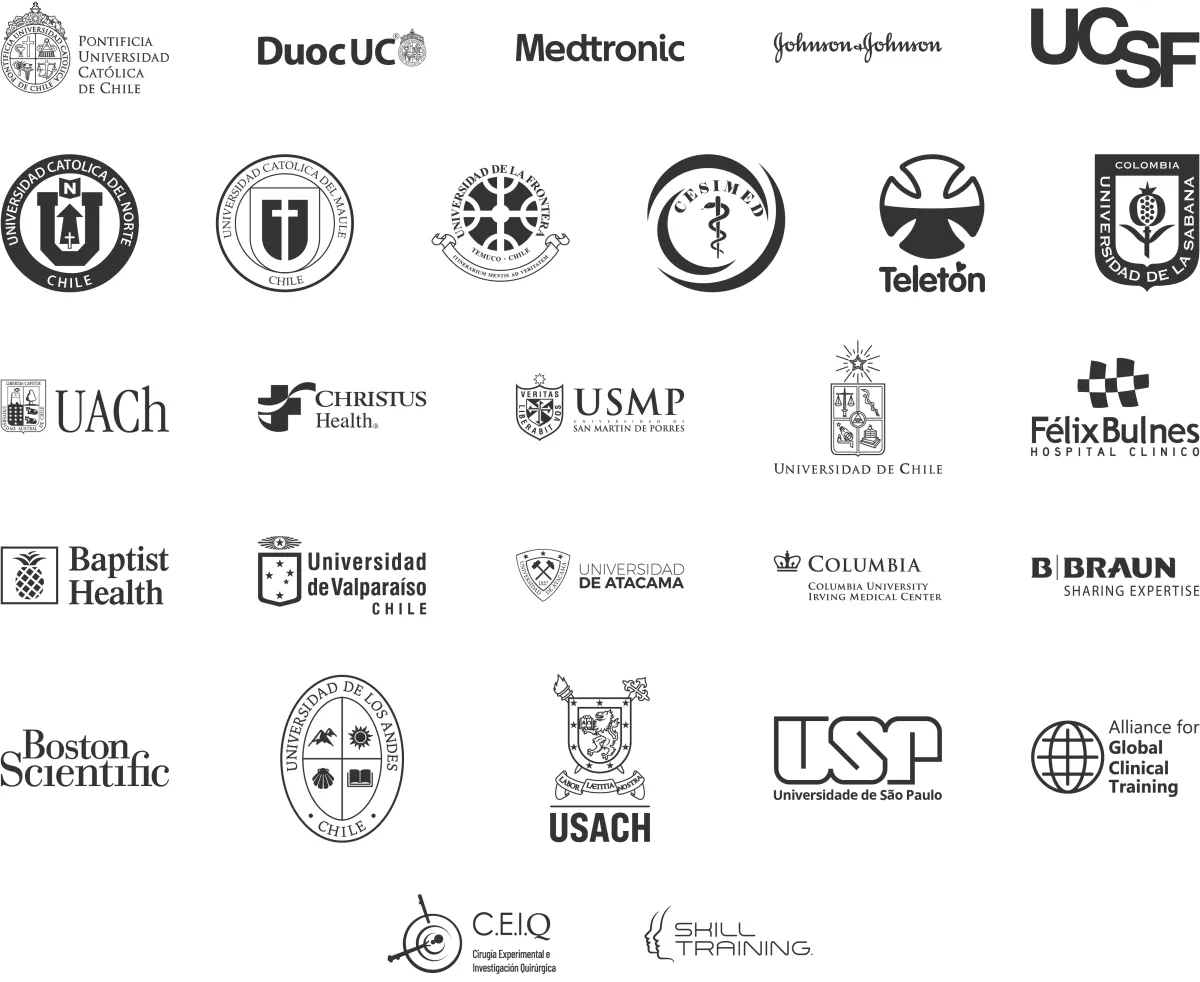

Featured In:
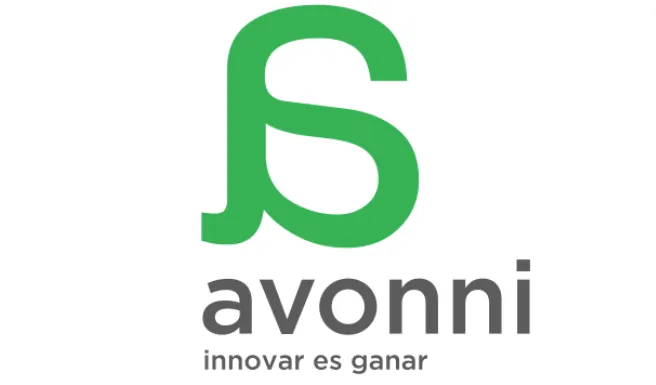

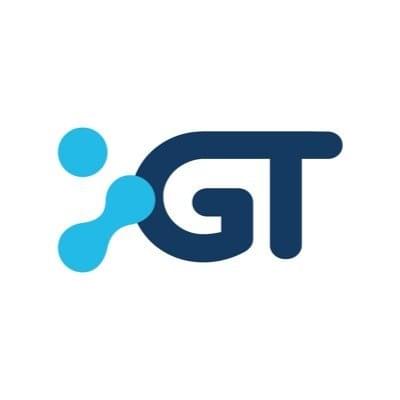
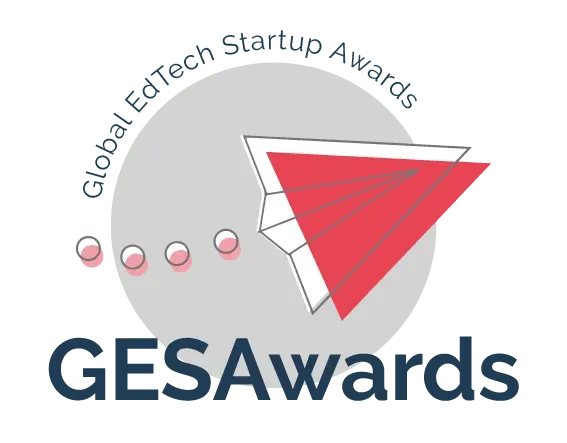

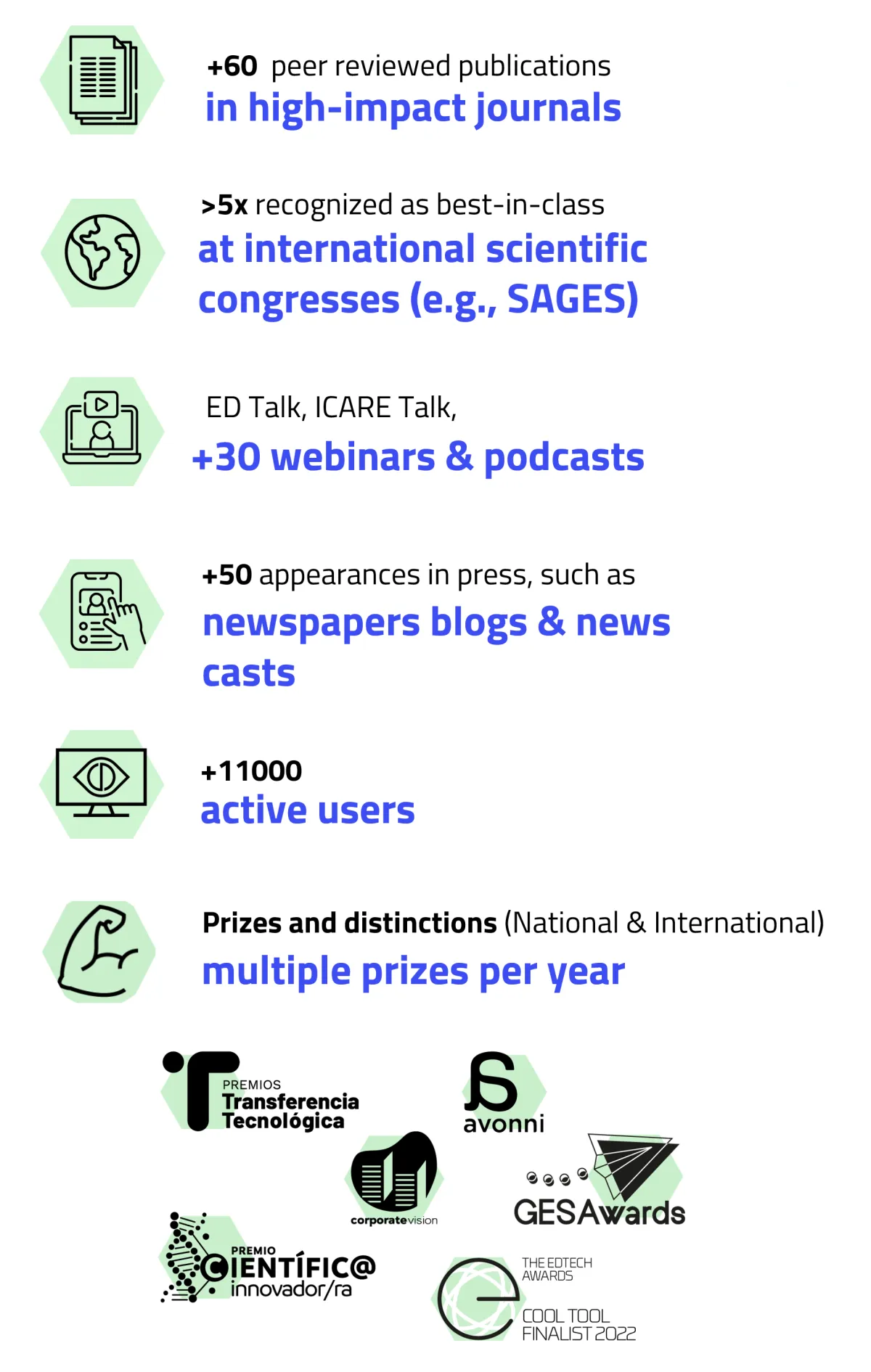
What We Do
C1DO1 Helps In Transfer Skills Remotely
Surgery residents training with C1DO1 performed better than general surgeons with 5 years of experience in complex laparoscopic cases.

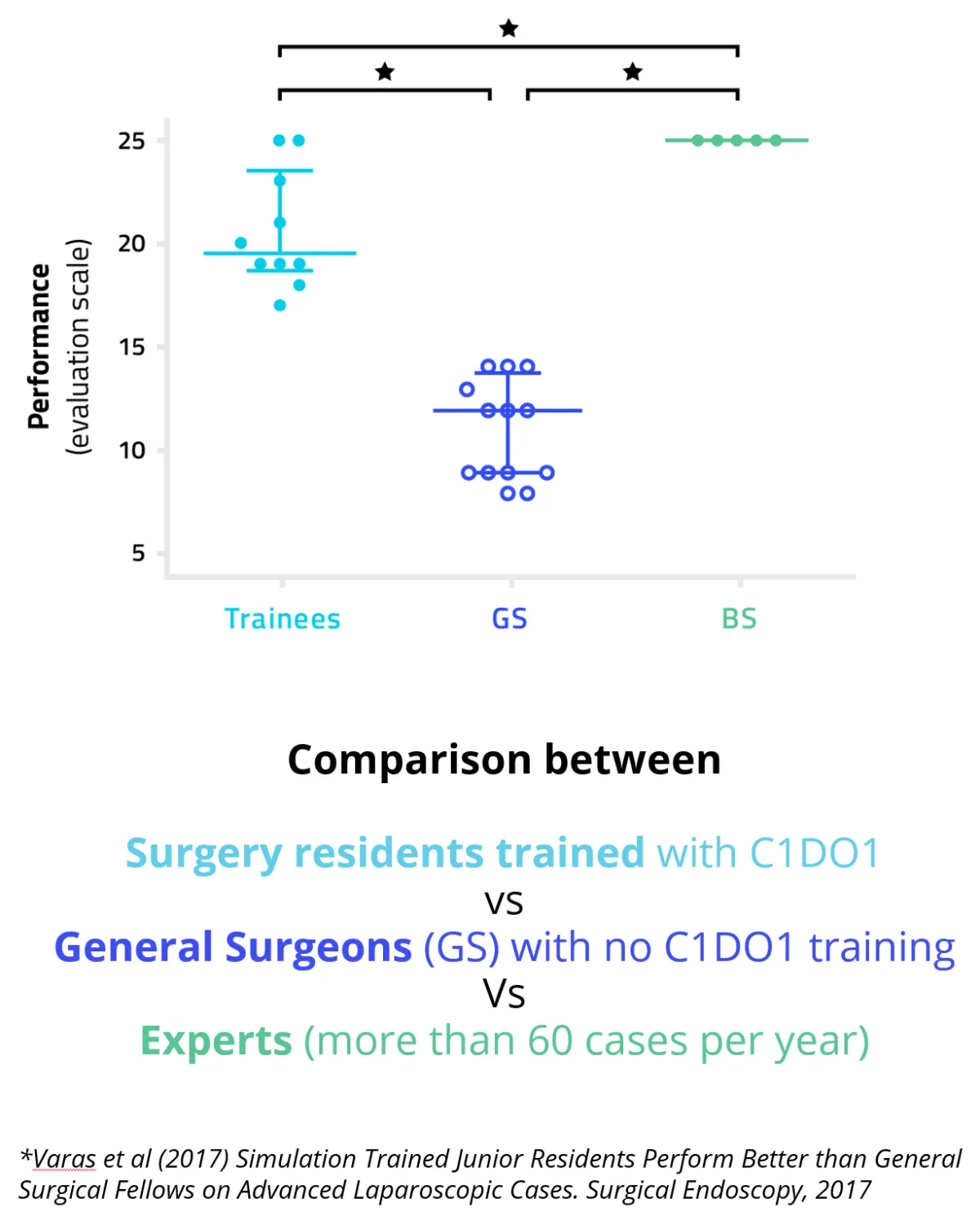
Johnson & Johnson Are Successfully Training Their Students Through C1DO1 (Lapp)

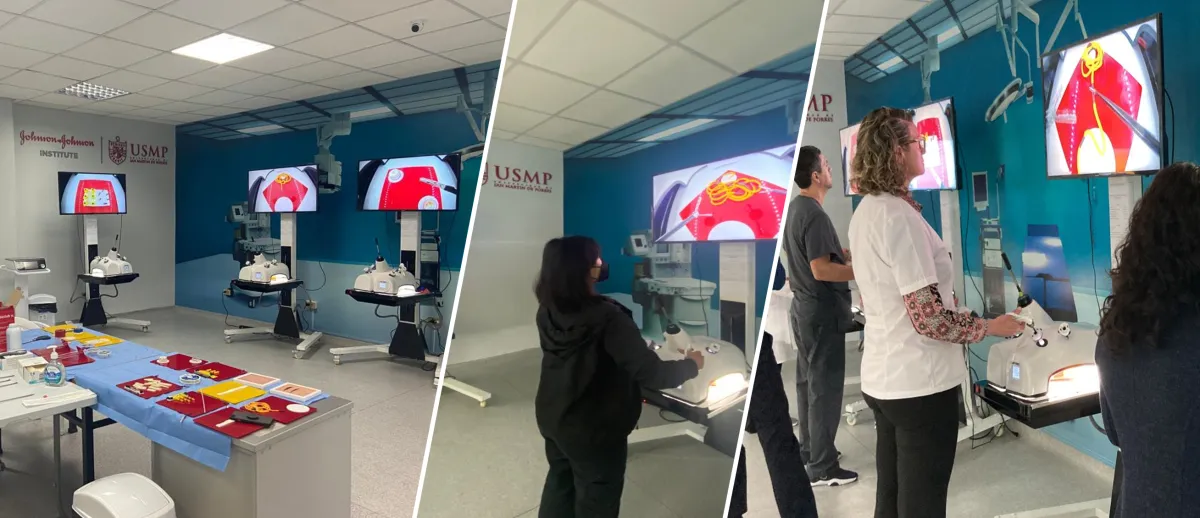
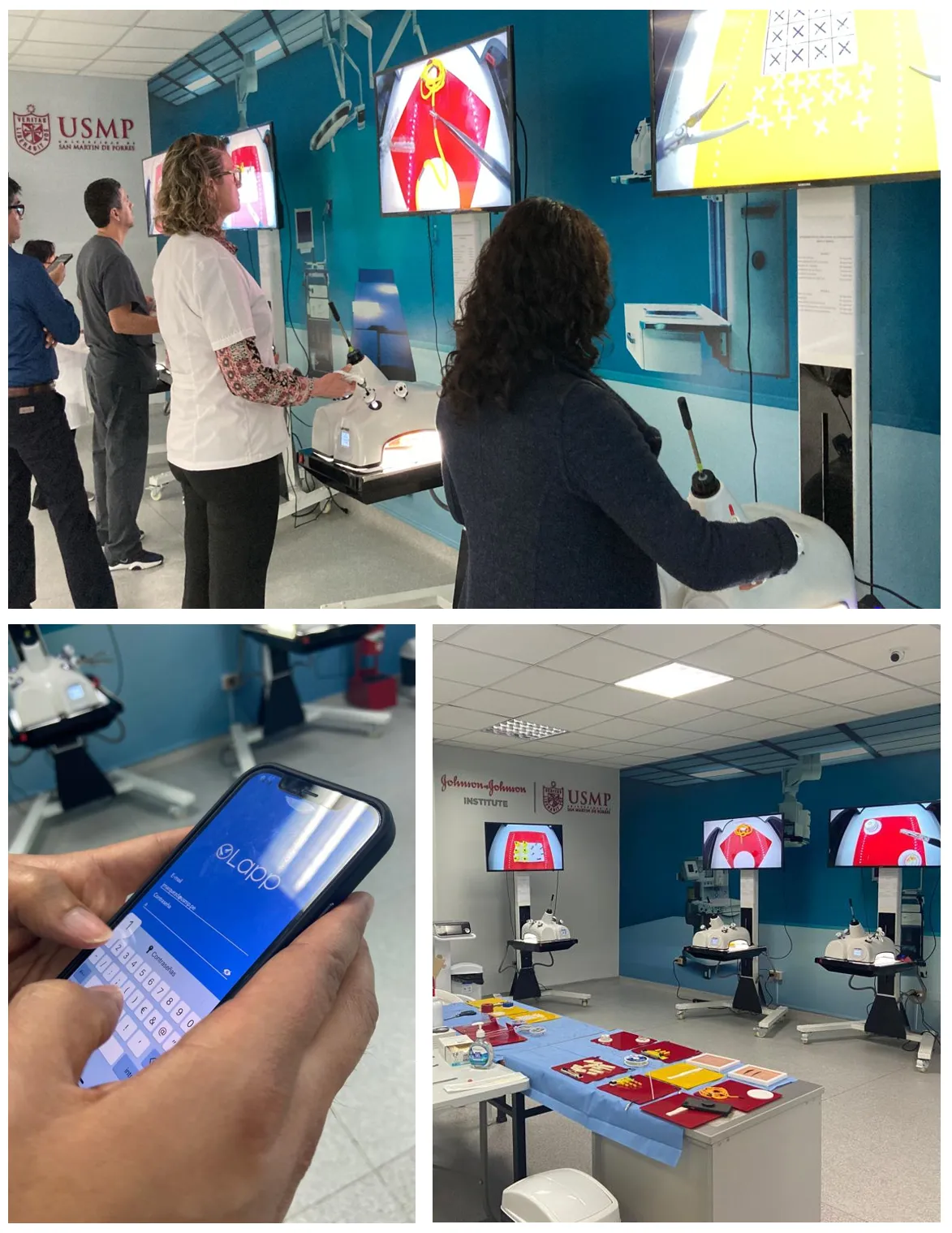
Laparoscopy Skills Training Course - Basic LAPP
Location: Simulation Center Universidad San Martin de Porres y J&J Institute. Country: Lima – Perú Duration: from October 17th to November 15th, 2022
Case Studies
"We were able to 4x the amount of students we had compared to the in-person training & obtained better performance metrics with every trained participant"
"We had a paradigm change 10 years ago with our institution, 2 years ago we went through the next paradigm shift and that was all because of C1DO1"
"Before C1DO1 we were having a difficult time scaling our trainings and our in-person facilities were always a stressed environment. After we started using C1DO1 we have been able to decrease our training cost with 75% and get a 200% increase in revenue all within 3 years"
"We were able to 4x the amount of students we had compared to the in-person training & obtained better performance metrics with every trained participant"
- Marcia Corvetto, MD
Medical Director of Simulation,
Pontificia Universidad Catolica University
09/12-2022
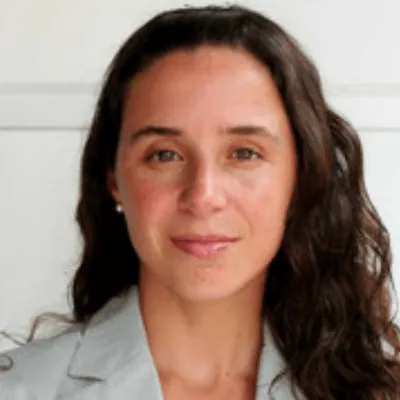
Marcia Corvetto, MD
Medical Director of Simulation,
Pontificia Universidad Catolica University
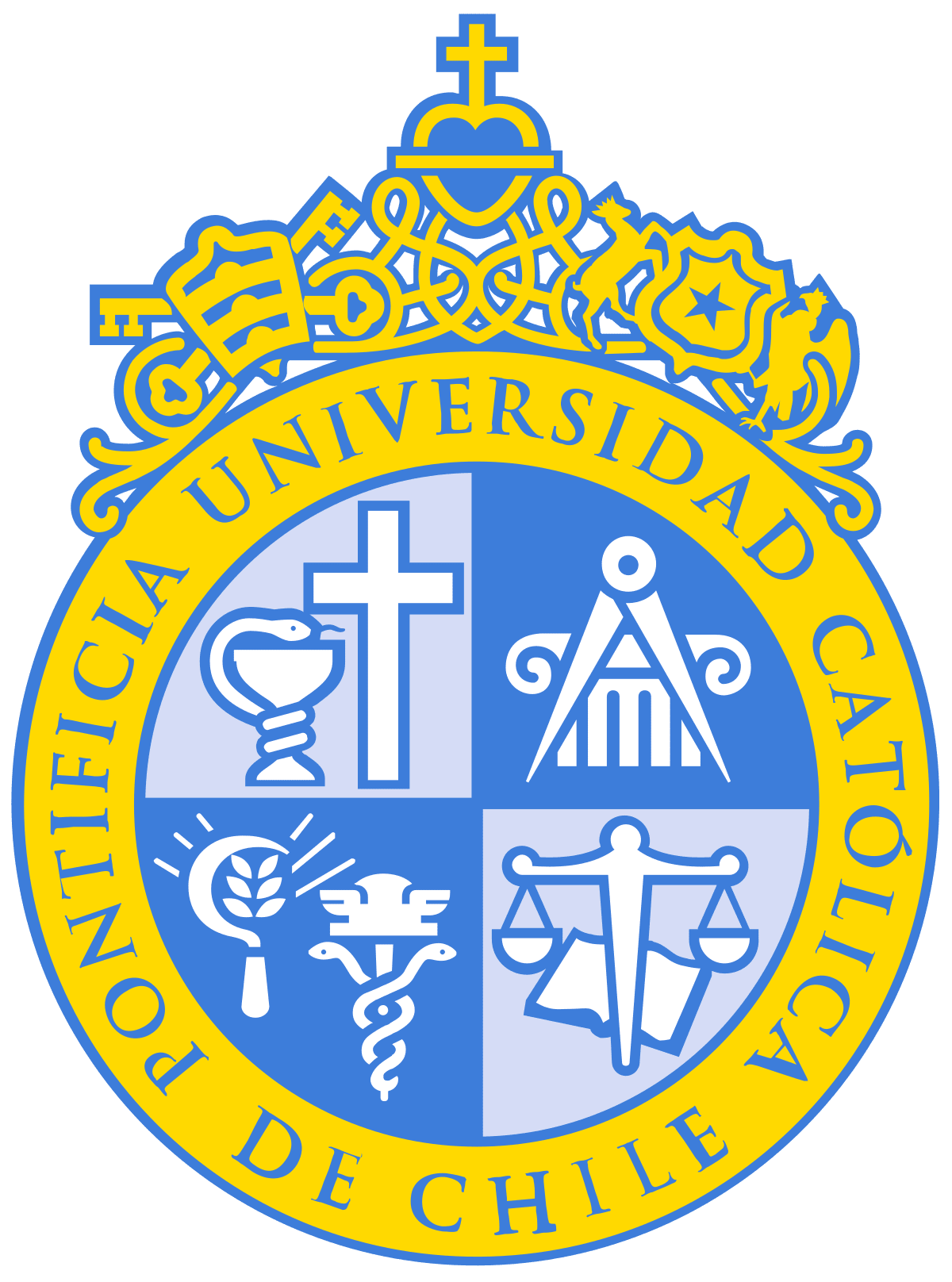
"C1DO1 Helped Católica University Increase Revenue By 200% & Decrease Training Costs By 75% Within 3 Years"
"With C1DO1, the same laparoscopic training program was exported to wherever surgeons wanted to train from. Now, there are more than 16 training centers in LATAM and the US, where surgeons go to a gym-type training center, perform their activities and are then assessed by course instructors from PUC, in Santiago, remotely and asynchronously. The laparoscopic program was scaled-up and expanded, and has been used to train more than 400 surgeons a year, across eight countries, who now are spending less than 1,500 in total. For Dr. Varas, the new format resulted in increased revenue for the Simulation Center of the Faculty of medicine of Católica University by 200 %. At the same time the training costs decreased by 75%."
Trained students and # of instructors:
2019: 2 training centers; 80 trained students per year; 4 trained instructors
2020: 5 training centers; 120 trained
students per year; 6 trained instructors
2021: 10 training centers; 220 trained
students per year; 7 trained instructors
Julián Varas, MD
CEO C1DO1,
Associate Professor of Surgery,
Vice-Chair of the Pontificia Universidad Católica University Simulation Center
15/11-2022
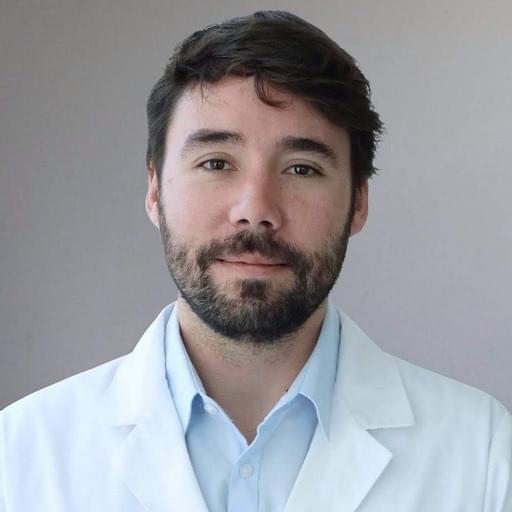
Julián Varas, MD
CEO C1DO1,
Associate Professor of Surgery, Vice-Chair of the Pontificia Universidad Católica University Simulation Center

"C1DO1 Makes It Easier To Make The Leap To Digital And Change The Culture Of Educational Institutions"
With Covid 19, they realized their in-person workshops would not be easily transformed into online courses, so most of their practical activities got suspended. Searching for possible technological solutions, they learned about C1DO1
Partnering with C1DO1 to digitally transform DUOC UC by 2025. Complete makeover of their organization using C1DO1 helped them digitalize and improve their institution with remote feedback loop training
"This platform allows us to make the invisible visible and this exercise has been very enriching since it allows us to visualize the learning process and improve it to obtain better academic results"
”I believe that without a doubt C1DO1 enriches the practical learning of our students and in this line it is easy to incorporate into course designs in progress, which makes it easier to make that leap to digital and change the culture of educational institutions ”
Francisca Cibie,
Director of Digital Experience at DUOC
4/11-2022

Francisca Cibie
Director of Digital Experience at DUOC
(largest professional institute in Chile with over 100.000 students and 5.000 teachers)
CURRENTLY: 10,000+ active users/students in 300 various disciplines

"Students & Instructors Loved Being Able To Access The Courses At Their Own Convenience"
"Training nursing residents on motivational interviewing was difficult. Difficulty for nursing residents (who are extremely busy) to come together at the same time with instructor for practice and feedback for motivational interviewing.
Eleven nursing residents who will implement the CHEF program (a healthy nutrition program for children and their families) acquired motivational interviewing skills remotely, receiving personalized digital feedback from experts, improving their practice at their own convenience.
Our students were pediatric residents and their schedules were very busy. By using C1DO1, they were able to access the content at their convenience.”
Army Col. (Dr.) Shad,
Medical Director of Simulation at CHRISTUS Health &
Chair of The Department of Obstetrics and Gynecology at The US Military
29/11-2022
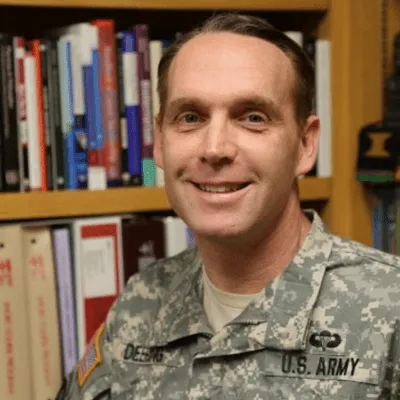
Army Col. (Dr.) Shad
Medical Director of Simulation at CHRISTUS Health &
Chair of The Department of Obstetrics and Gynecology at The US Military

"Course Completion Rate 100% Thanks To C1DO1"
"Before C1DO1, students were passing the minimally invasive surgery practical exam (fundamentals of Laparoscopic Surgery; FLS) in their chief resident years (program year 4 or 5). Additionally, trainers were only available for in-person activities on Wednesday mornings, and they couldn't train their learners continuously."
With the C1DO1 methodology, they are now accessing validated training programs for basic laparoscopy and passing their FLS exam in their first year of the program. Ten students were trained in basic and advanced laparoscopic surgery courses (32 sessions of 2 hours) by only one expert.
Students and instructors perform their activities at their most convenient time. By securing students a protected period for training, they practice at their own pace. Instructors can easily assess and give feedback in less than 72 hours of receiving the trainee videos, allowing progression and continuous training.
In this study (See here) program year 1 surgery residents training with the C1DO1 methodology performed much better than general surgeons graduated from 5-year training programs (with no C1DO1 training) in complex cases (Laparoscopic roux-Y gastric bypass)"
Hueylan Chern, MD
Head of the Skill Lab at University of California San Francisco
05/12-2022

Hueylan Chern, MD
Head of the Skill Lab at University of California San Francisco
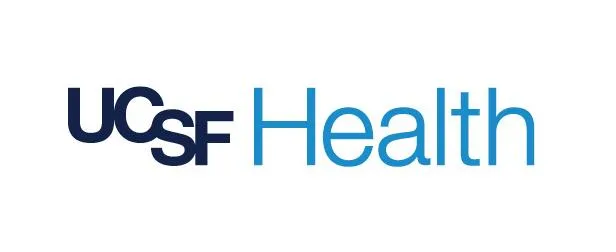
Transfer your institution's identity into the online world and make your school unique and one of a kind; one which students will choose because of your innovative and successful teaching methodologies.
Classic online courses don't require your institution to transform your teachers, students, or processes digitally. In other words, turning a PowerPoint presentation into a video in which a teacher narrates the slides will not contribute to your journey towards digital transformation.
Classic in-person workshops are "analog" and not digital, challenging to replicate and scale up.
When you tell your teachers to record themselves to create "a narrated presentation", you only get digital content, not a digital institution.
By not interacting with their students, teachers lose their teaching skills, and the institution loses part of its identity. In the online world, all institutions begin to look similar, offering similar courses and content with nothing to really distinguish one from the other.
Digital content is mainly a tool to help the educator teach. Empowering your teachers with digital feedback tools makes them the key players in the institution's identity again.
Your teachers will be the differentiating element in your classes, not because they are repeating year after year the same recorded content, but because they are providing the critical component for their students to succeed and acquire skills; feedback.
Your teachers and educational methodology become your most crucial asset, allowing you to compete with unique courses and proven results.
Your replicable, scalable teaching process enables you to impact more learners while maintaining quality.
Students will choose your institution because your teaching methodologies deliver results.
And the best part is you will be able to measure everything in the learning cycle with objective metrics, allowing you to innovate and differentiate your courses to improve outcomes continuously.
Provide Your Students With The Same Detailed, Personalized Feedback As In-Person Learning And Improve Their Performance While Achieving Courses With Over 60% Completion Rate.
Consider this study where Católica University trained in four different skills over 1200 healthcare providers, with (a 60% completion rate) in three months with less than 40 instructors.
Implementation of Distance-Based Simulation Training Programs for Healthcare Professionals.
Using C1DO1 (remote training) vs In-Person Training
=
Same Results

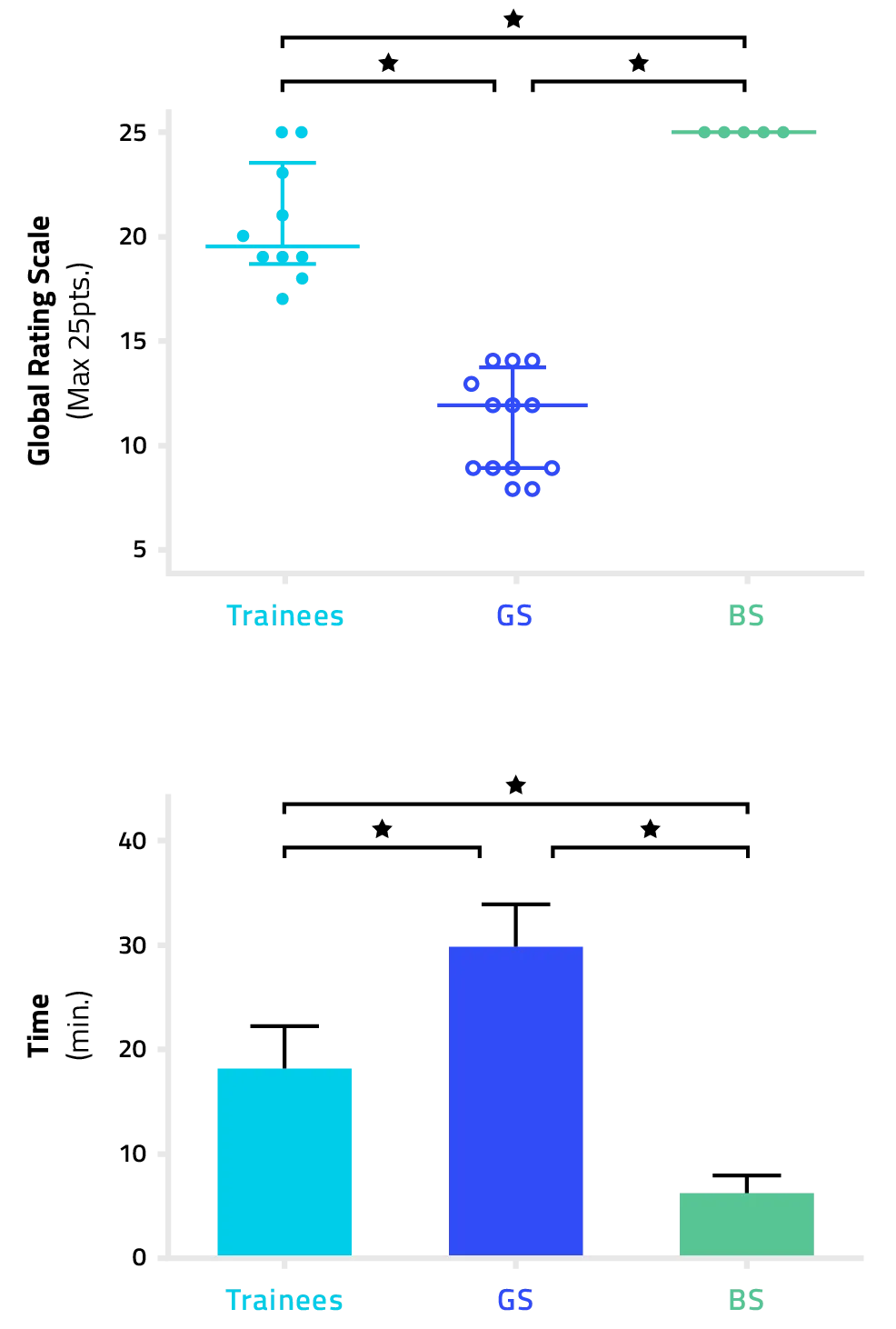
Comparison between 2 groups:
in-person feedback (control) & remote feedback (C1DO1)
A - OSATS global scale at the initial and final evaluations
B - Procedure time at initial evaluation (pre) and final evaluation (post)
"We were able to completely revolutionize our institution because of C1DO1. After we started using the platform we saved 50% on instructor fees all while being able to train 4x as many students as before"
Marcia Corvetto, MD
Medical Director of Simulation,
Pontificia Universidad Católica University

Marcia Corvetto, MD
Medical Director of Simulation,
Pontificia Universidad Católica University
Old Way
Using expensive in-house experts to teach 1-1
Expensive and time consuming bootcamps and workshops
Disruptive training schedule for students that requires time off work, travelling and only practicing very few times
New Way
Easy accessible feedback always readily available for teachers and students to see through a digital platform
Personalized feedback from a highly motivated trained instructor being able to give feedback at their own convenience
Letting students train at their own pace and wherever they like
Old Results
- Expensive training and high opportunity cost for both the teachers and the institution
- Low course completion rate, no skill acquisition and expensive to achieve a learning curve because you need instructors available for every session
- Unsatisfied, tired, poorly trained personnel; unmotivated trainers who can only train a certain amount of people at a time stretched to their limits
New Results
Remote transferring of skills in no time will help your organization scale your training programs easily while decreasing training costs
Successful transfer of a practical skill/procedure as a result of deliberate practice and personalized, high-quality feedback provided by trained instructors.
More proficient students, more scalable and cheap high-quality training to 4x more students than before
Quickly train virtually to reach and teach many more Students & Personnel
How It Works
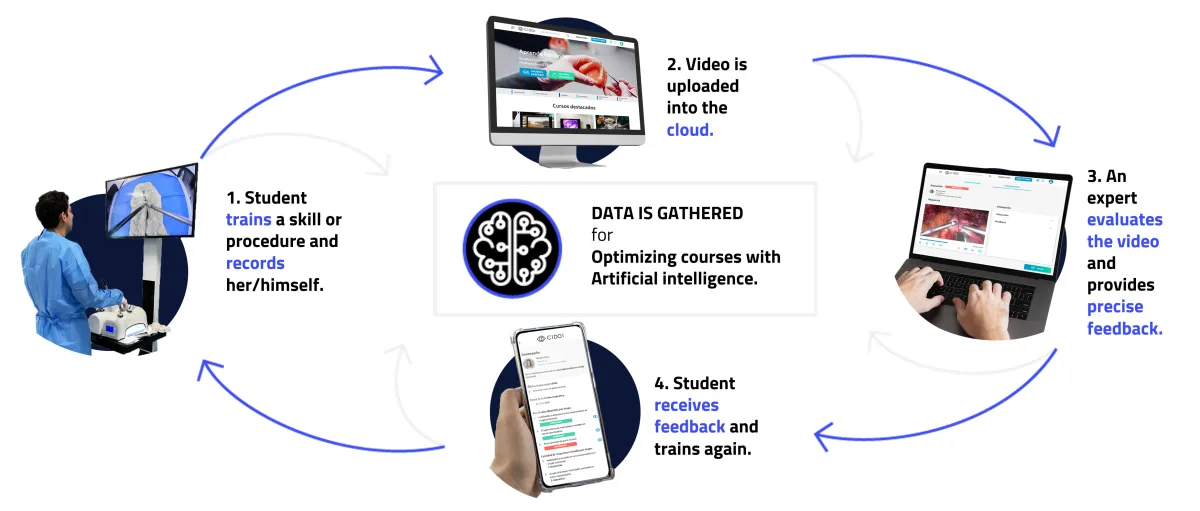
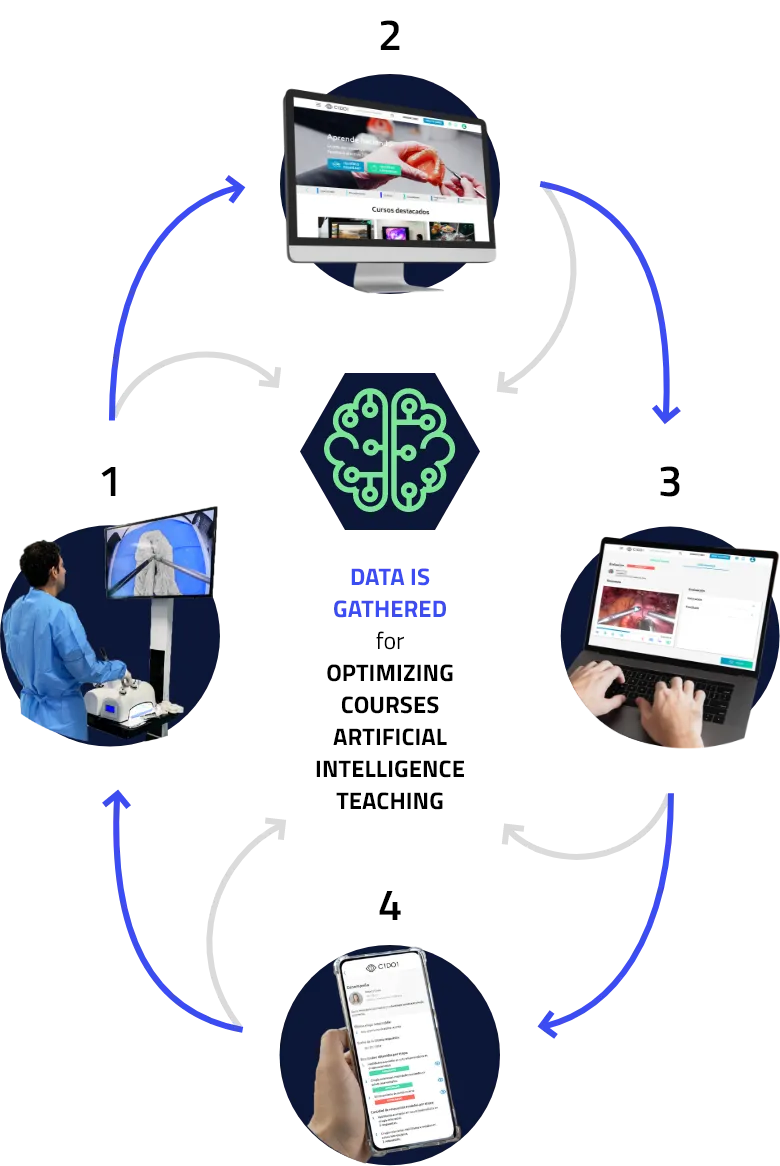
Student Trains A Practical Skill Or Procedure And Records Themselves Doing It
Video Is Uploaded Into The Cloud
An Expert Evaluates The Video And Provides Precise Feedback
Student Receives Feedback And Trains Again
“This platform allows us to make the invisible visible and this exercise has been very enriching since it allows us to visualize the learning process and improve it to obtain better academic results”

Francisca Cibie
Director of Digital Experience at DUOC

“We were able to 4x the amount of students we had compared to the in-person training & obtained better performance metrics with every trained participant”

Marcia Corvetto, MD
Medical Director of Simulation,
Pontificia Universidad Católica University

Our Research Driven 3-Step Method
Use a learning platform where personalized feedback is easily accessible
Train your instructors on how to teach, rather than assuming a person with a skill knows how to teach properly, to make sure you have high-quality feedback.
Know how to avoid burnout for students and trainers by incorporating a more convenient, self-paced learning program.
C1DO1 As The Market Leader In Remote Training
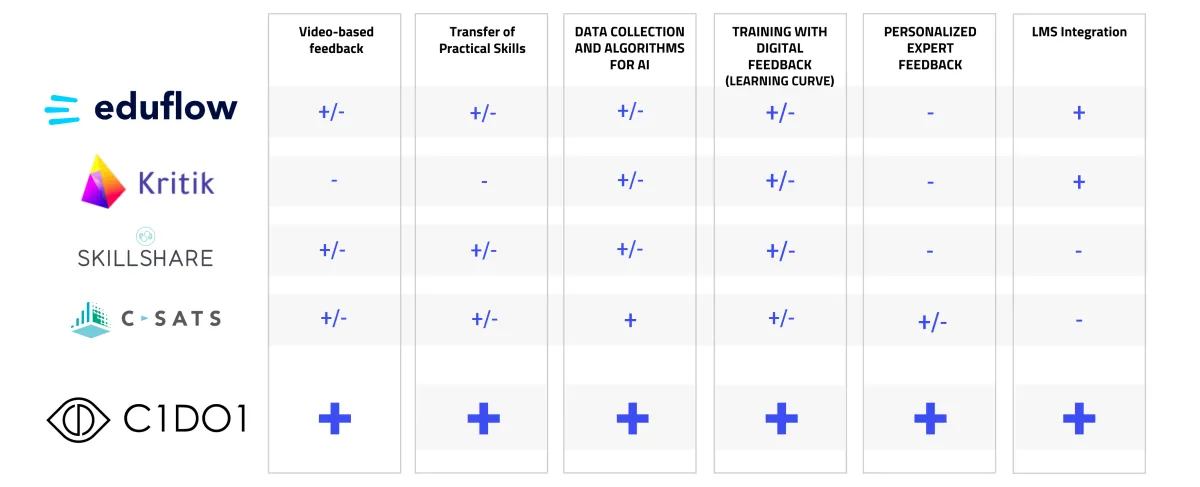
Meet The Founder

Julián Varas, MD
CEO C1DO1,
Associate Professor of Surgery,
Vice-Chair of the Pontificia Universidad Católica University Simulation Center
Early in my Career as an educator in surgery I was challenged with a problem, is it possible to teach technical skills remotely to a surgeon in another country? I didn’t want to travel to another country to give instructions to my students, or for them to travel to my distant country (Chile). If I used platforms such as zoom, the scalability was practically impossible, imagine yourself teaching through zoom how to operate to one trainee in a synchronous live session, now picture your self with over 100 students, its impossible!
I’ve realized, There are no good alternatives to train and transfer skills remotely. E-learning has forgotten a key ingredient in the learning process, the teachers feedback; without it we simply cannot improve our mistakes until we achieve a learning curve.
So that's why I started C1DO1.
Institutions worldwide currently use C1DO1 to teach basic and advanced skills to over 13,000 students, in hundreds of skill-based disciplines.
The Team
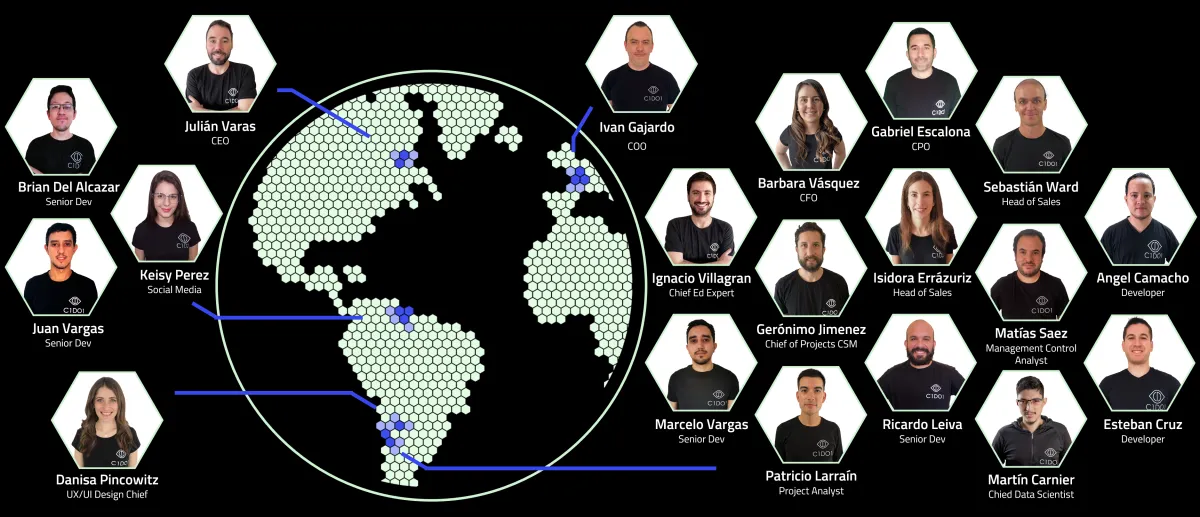
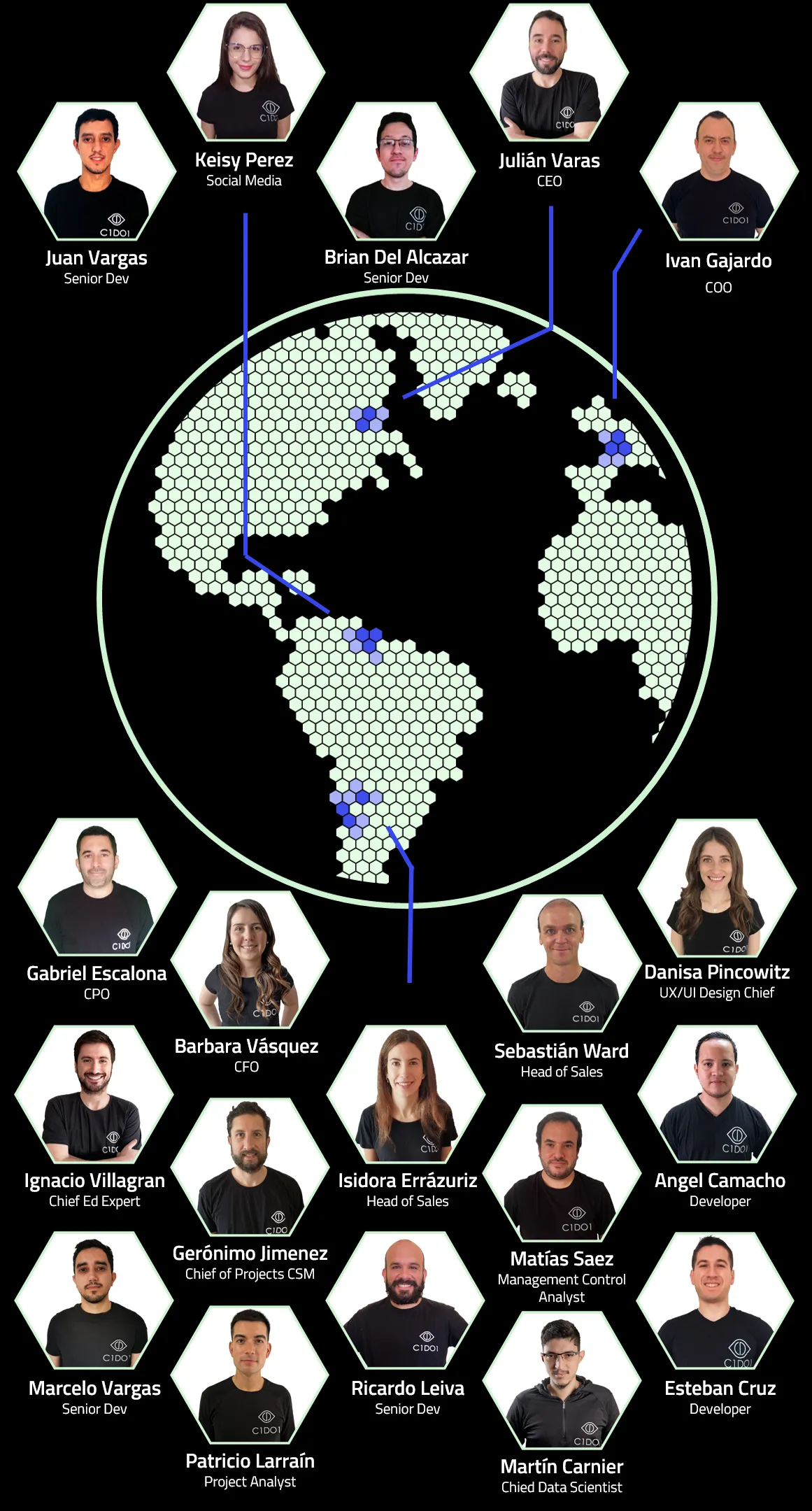
FAQ
How much energy and resources are required from our end?
Transforming the in-person, traditional workshops or boot camps to train your healthcare personnel into an online format requires a series of steps, for which we will guide you through the entire journey.
All the "raw materials" you already have from the way you have been carrying out your training programs so far: a place and materials/tools to perform the activities; a teaching program with instructions for the activity and details about what to do and how; instructors to evaluate the activities and provide feedback.
Then, much of the energy and resources go into adapting all this to the platform's format.
It involves making sure students have access to the required elements to perform the activities, preparing digital instructional materials (e.g., written documents, video tutorials), training users on platform use and navigation, training instructors on digital feedback, allocating time for instructors to evaluate (if needed), etc.
How scalable is this? Can you train thousands of students?
It is very easily scalable.
On the one hand, training instructors on the C1DO1 methodology is simple and fast.
All you need is someone proficient at a skill, who is then trained on providing good quality feedback and the use of our intuitive digital feedback tools.
Don’t worry, we have plenty of training resources from user manuals to tutorial videos.
And if you want, we can also set up synchronous, online training sessions.
Once your instructors are trained, you create a network of instructors ready to provide feedback, within 48 hrs, to students who upload their activities from anywhere in the world.
Instructors provide detailed, personalized feedback from wherever they want at their most convenient time (within the time-frame), and after a few times, they become experts at providing feedback, doing it better and faster every time.
A specific number of students per instructor and time will vary depending on the skill, ability of instructors to provide feedback, and a total number of students.
For instance, a total of 40 instructors were able to train 1,200 healthcare personnel on covid-related skills within 3 months
How long does it take to implement and to start teaching through C1DO1?
It really depends. It depends on what you already have and what you need to develop.
The C1DO1 methodology needs 3 key pillars for it to work:
Pillar 1: Space/infrastructure and materials for students to perform an activity or train a skill (i.e. if you're learning how to play the guitar, you need a guitar).
Pillar 2: A training program, hopefully, validated, describing the activities to be performed to train a skill.
This includes instructions about what to do (written documents and/or video tutorials), evaluations and assessment criteria, content to be taught, etc. (i.e. the guitar lesson, explaining what notes to play, where to put your fingers, how to move the hands. how you will be evaluated, etc.).
Pillar 3: A network of experts on the training program, who have also been trained on the C1DO1 methodology, who will be providing the feedback (i.e. a guitar instructor who knows the lesson well, and who will be trained on feedback and platform use).
If you already have the 3 pillars, most of the work would go to adapting the already existing training program into the C1DO1 format and training the instructors on feedback and platform use.
For example, for a course of about 50 students who were evaluated by 5 instructors, it took 1 month to plan out and 1 month to implement (from the creation of the course in the platform until the activities were performed and evaluated).
LMS-related questions: do you need one? If we have one already, can we integrate C1DO1 into it?
If you don't have an LMS, that's totally ok.
C1DO1 can act as the LMS you need for the courses you implement.
For each user, it creates a profile where all the person's courses are stored and can review performance and have access to feedback and data.
If you do have an LMS, that is also ok.
We can integrate C1DO1 into your LMS so that your users have a seamless experience and have access to C1DO1 directly from your LMS, without having to go to a different platform to access the activities.
What does a C1DO1 license include?
Each course license to the C1DO1 web/mobile software is single-use, non-transferrable, and includes:
- Web/iOS/Android user access
- Full admittance to tutorial videos and/or video feedback capsules (which would need to be developed by the Institution)
- Students Get: Access to their portfolio which includes: Learning curve (watch and understand their own progression); Scores (from every session assessed) at any time; Access to their video assessments and feedbacks at any time.
- Instructors Get: Access to multi-format digital feedback tools; Tracking of students’ progress and performance; Data analytics of previous sessions and learning curves, to optimize teaching strategies.
- Admins Get: Access to a dashboard for KPI and analytics of every trainee/teacher related to courses imparted through the platform; Ability to enroll students and teachers; Ability to create new courses
- Technical software support (during business hours, EST).
- Assistance in troubleshooting and software navigation (during business hours, EST).
Data-related questions: where are the videos and data stored? Who owns this data? Are there privacy and confidentiality measures in place to protect the data of the users?
All videos and data are stored in secured Amazon Web Services (AWS) servers. The data collected from your users is owned by you. We may disclose aggregated information about our users, and information that does not identify any individual, without restriction.
We have implemented measures designed to secure your personal information from accidental loss and from unauthorized access, use, alteration, and disclosure. All user and transaction data you provide will be encrypted while being transported and will be stored encrypted on secure servers behind firewalls. You can request access to, correct or delete any piece of personal information collected by us at any time.
In addition, we are HIPAA compliant, which is the standard for sensitive patient data protection, in the case it would apply to your courses and/or practices.
Why should I care about instructor burnout?
Burnout is vital because it impairs instructors and students to transfer and acquire a skill effectively. Burnt-out, stressed-out personnel cannot perform at their best in any scenario. In the training/educational context, teachers cannot teach satisfactorily, and students can not train and study well. Burnout instructors may avoid exposure to educational opportunities and, worst cases, quit their teaching roles. In the care provision context, providers are not delivering high-quality care, negatively impacting patient outcomes.
Won’t self-paced learning slow down the time it takes to train employees?
Won’t self-paced learning slow down the time it takes to train employees?
Not necessarily. The fact that a training program can be “self-paced” does not mean that students and instructors won’t have a potential time range to turn in assignments and evaluate the activities. It just means that course participants may perform the activities and evaluations at the moment/place that is most convenient to them within a particular time-frame.
What’s the difference between knowing a skill and knowing how to transfer the skill?
How do I teach someone how to get better at transferring skills?
You need to train them on the provision of feedback, since this is the key to transferring skills. Providing constructive and effective feedback is in itself a skill that can be trained. A person needs to understand the up-to-date concept of feedback and how it is incorporated in the feedback loop (which includes the provision of the feedback, the reception and understanding of the feedback, and finally the incorporation of that feedback in the students’ practice). Then, the person needs to understand the characteristics of effective feedback (i.e., timely, specific, constructive, etc.) and how to provide it, for example through a digital platform.
Why is personalized feedback important?
Do I need my own education platform or can I use platforms like learning management systems (LMS) and (or) others to do this?
An LMS helps you manage your courses, they were not created to teach and transfer skills. Yes, you do need an education platform or LMS, because this is the place where courses and their registries will be stored. But not only that, you will also need to add other platforms with the capability for video assessment and storage and more importantly that allows for the exchange of feedback. And these features go beyond a simple LMS that you can find on the market. Having said that, the platforms (LMS, etc.) do not need to be yours (i.e. created by you), but you could develop one, or find some options that are already available on the market. And on top of that, you will need to “upgrade” this platform for video storage and feedback exchange capabilities, or develop these in parallel to the aforementioned LMS. You can ask your student to record videos of themselves and upload them on platforms like YouTube, teachers could comment their videos. However you will not be able to add video inputs more than comments, as feedback (such as drawings, video capsules, audio memos, etc.). More importantly you would need to find a way to understand and classify the comments for further analysis and decision making. The learning analytics will be vague and not easy to process.
© C1DO1 2022 - All Rights Reserved
Del inca 4446, Las Condes, Santiago, Región Metropolitana, 7550000 CL
